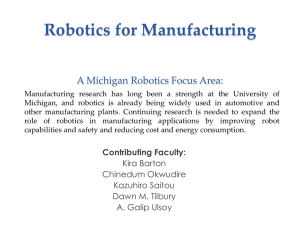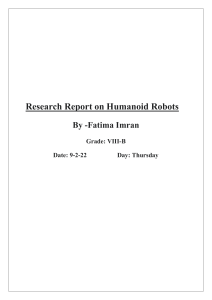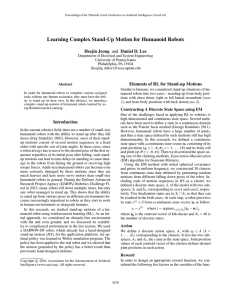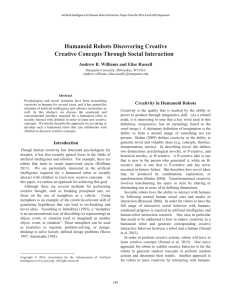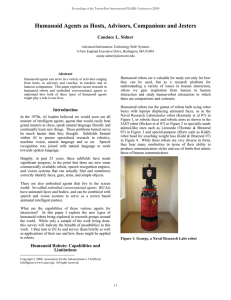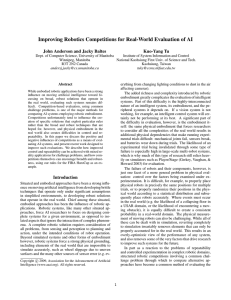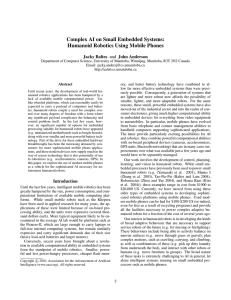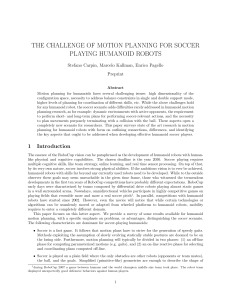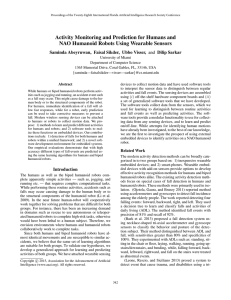David Grunberg Graduate Student College of Engineering – Department of
advertisement
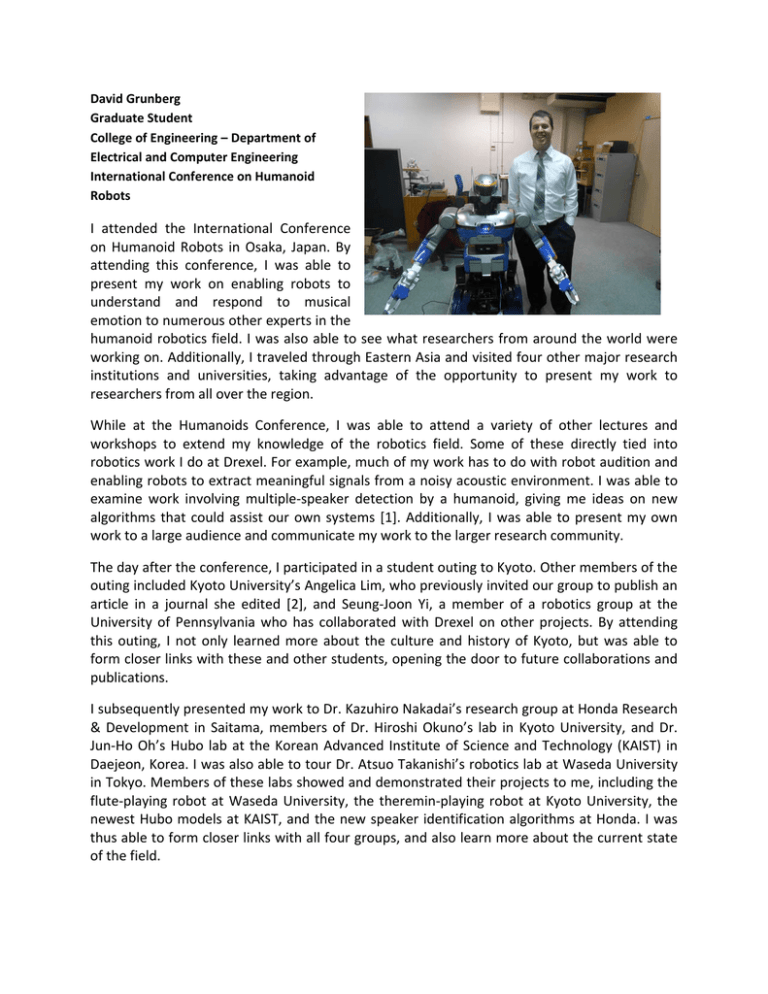
David Grunberg Graduate Student College of Engineering – Department of Electrical and Computer Engineering International Conference on Humanoid Robots I attended the International Conference on Humanoid Robots in Osaka, Japan. By attending this conference, I was able to present my work on enabling robots to understand and respond to musical emotion to numerous other experts in the humanoid robotics field. I was also able to see what researchers from around the world were working on. Additionally, I traveled through Eastern Asia and visited four other major research institutions and universities, taking advantage of the opportunity to present my work to researchers from all over the region. While at the Humanoids Conference, I was able to attend a variety of other lectures and workshops to extend my knowledge of the robotics field. Some of these directly tied into robotics work I do at Drexel. For example, much of my work has to do with robot audition and enabling robots to extract meaningful signals from a noisy acoustic environment. I was able to examine work involving multiple-speaker detection by a humanoid, giving me ideas on new algorithms that could assist our own systems [1]. Additionally, I was able to present my own work to a large audience and communicate my work to the larger research community. The day after the conference, I participated in a student outing to Kyoto. Other members of the outing included Kyoto University’s Angelica Lim, who previously invited our group to publish an article in a journal she edited [2], and Seung-Joon Yi, a member of a robotics group at the University of Pennsylvania who has collaborated with Drexel on other projects. By attending this outing, I not only learned more about the culture and history of Kyoto, but was able to form closer links with these and other students, opening the door to future collaborations and publications. I subsequently presented my work to Dr. Kazuhiro Nakadai’s research group at Honda Research & Development in Saitama, members of Dr. Hiroshi Okuno’s lab in Kyoto University, and Dr. Jun-Ho Oh’s Hubo lab at the Korean Advanced Institute of Science and Technology (KAIST) in Daejeon, Korea. I was also able to tour Dr. Atsuo Takanishi’s robotics lab at Waseda University in Tokyo. Members of these labs showed and demonstrated their projects to me, including the flute-playing robot at Waseda University, the theremin-playing robot at Kyoto University, the newest Hubo models at KAIST, and the new speaker identification algorithms at Honda. I was thus able to form closer links with all four groups, and also learn more about the current state of the field. [1] J. Sanchez-Riera et al, “Online Multimodal Speaker Detection for Humanoid Robots,” Proceedings of the International Conference on Humanoid Robots, 2012, pg. 126-133. [2]: D. K. Grunberg, A. M. Batula, E. M. Schmidt, and Y. E. Kim, "Synthetic Emotions for Humanoids: Perceptual Effects of Size and Number of Robot Platforms," Journal of Synthetic Emotions: Special Issue on Music, Robots, and Emotion (invited paper), 2012.


